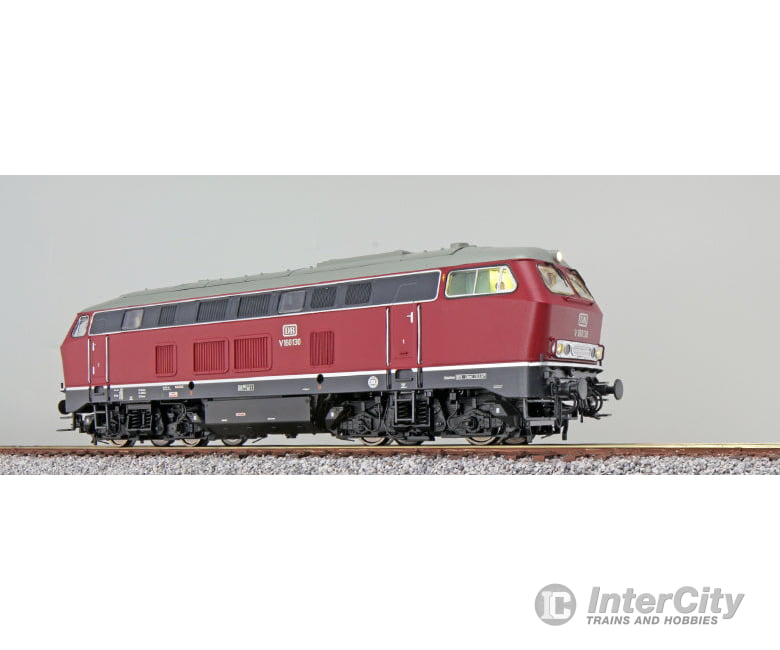Description
- Newly designed frame and housing
- Metal structure and frame
- Openwork fan grilles in the roof, etched play grilles
- Multi-part bogie covers with real steel springs
- Separately attached handle bars and steps
- Spring-loaded buffers
- Coupling in a slide-guided NEM shaft
- Five-pole ESU motor with two flywheels
- Drive via cardan/worm gear on three axles, two traction tires
- LokSound 5 decoder for DCC, Motorola®, M4 and Setrix operation
- Independent registration at control centers with RailComPlus® or mfx functionality
- PowerPack storage capacitor for uninterruptible power supply
- Speakers with a large sound capsule for maximum sound enjoyment
- Universal electronics with plug-in grinder and slide switch for switching between two-wire and center-wire operation
- Smoke generator synchronous with the locomotive sound
- Digitized original sounds of a 216
- Sensor-controlled cornering noises when cornering slowly
- Light changes depending on the direction of travel, headlights on the train side can be switched off, shunting, driver's cab and driver's desk lighting
- Brake sparks when braking sharply
- Pipette for filling the smoke generator and a second coupling are included
- Minimum passable radius = 360 mm
- Length over buffers = 184 mm
The DB diesel locomotive type program of the 1950s had a gap between the 1100 hp V100 and the twin-engine V200, which the Bundesbahn filled with the single-engine V160 from 1960 onwards. In order to achieve the target maximum axle load of just 18.5 t, consistent lightweight construction was necessary. Nine of the ten pre-series machines, affectionately known as Lollo after the Italian film actress Gina Lollobrigida because of the striking rounding of the front sides, were handed over to the DB from August 1960. The tenth received an angular forehead that was inexpensive to produce, but by retaining the frame it made for a less advantageous appearance. The V160s, which were built in series from 1964 onwards, had a continuous frame and have shaped the image of DB mainline diesel locomotives ever since. The Daimler-Benz type MB 839 Bb (later MTU MB16 V 652 TB) was chosen as the traction motor. The 1,900 hp sixteen-cylinder unit had a turbocharger and intercooler and accelerated the V160 to 120 km/h. Since the Federal Railway did not see the need to equip all V160s with multiple traction and push-pull train control, these devices were only installed in V160 026-035, 083-104, 130-169 and 185-199. You can therefore send your ESU models across the system using a push-pull train with peace of mind. The V160s proved to be very reliable right from the start and were used on freight, passenger and even express trains. The four-axle vehicles were also often expected to transport passenger trains, for which the more powerful and faster V200 was intended. In freight transport, for example, the locomotives had to prove themselves as replacements for failed steam 44s. When the last of the heavy five-couplers were retired from the DB in 1977 and new 218s were delivered at the same time, the number of 216s in the Ruhr area was increased and the locomotives were increasingly used in freight transport.


